Land Invertebrates
Media
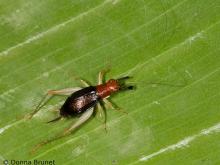
Species Types
Scientific Name
Phyllopalpus pulchellus
Description
The handsome trig lives in vegetation about four feet off the ground near water. This beetle-like cricket may be a mimic of bombardier beetles, which spew foul chemicals for defense.
Media
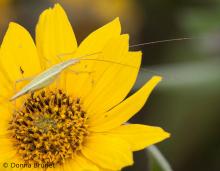
Species Types
Scientific Name
About 20 species in North America in subfamily Oecanthinae
Description
Tree crickets, or pale bush crickets, are a subfamily of crickets that are little seen but often heard. True to their name, instead of living on the ground, they live in trees, bushes, and tall herbaceous plants.
Media
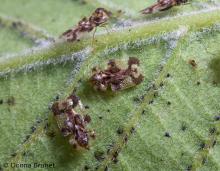
Species Types
Scientific Name
About 165 species in North American north of Mexico
Description
Grayish, small, flattened, and rectangular, lace bugs have a lacy network of ridges on the wings and body. They suck nutrients from foliage with their beaks. The resulting pale spots on leaves might be the first sign of their presence.
Media

Species Types
Scientific Name
Gelastocoris oculatus
Description
With their bulging eyes and squat shape, big-eyed toad bugs really do look a lot like tiny toads. Their genus name means "laughable bug" or "ridiculous bug."
Media
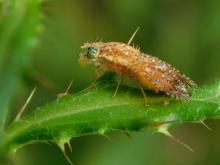
Species Types
Scientific Name
About 300 species in North America north of Mexico
Description
Tephretid fruit flies, in the family Tephritidae, are often called peacock flies for the intricately patterned, often brightly colored wings of many species.
Media

Species Types
Scientific Name
8 tribes, with about 23 genera, in North America north of Mexico
Description
Millipedes in family Xystodesmidae often have bright colors that serve as a warning to potential predators that they may secrete foul or toxic substances.
Media

Species Types
Scientific Name
Paroxya clavuliger (syn. P. hoosieri)
Description
The olive-green swamp grasshopper lives on pond edges and wetlands where the vegetation is thick and lush. It has rather long antennae, for a short-horned grasshopper.
Media
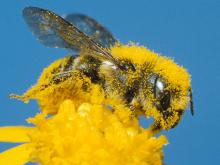
Species Types
Scientific Name
More than 630 species in North America north of Mexico
Description
Megachilid bees are a family of solitary, native bees that carry pollen only on the underside of the abdomen, never on the hind legs. Large cutting mouthparts allow them to collect pieces of leaves, soil, or plant resins to line their nests.
Media

Species Types
Scientific Name
More than 1,200 species in North America north of Mexico
Description
Andrenid bees, also called mining bees, are solitary ground-nesters. Most are specialist pollinators whose life cycle is timed to correspond precisely to the blooming of specific flowers.
Media

Species Types
Scientific Name
Ommatius spp.
Description
Ommatius robber flies are medium-sized robber flies with distinctively branching antennae. There are about four of five species that might occur in Missouri.
See Also



Media

Species Types
Scientific Name
Cisseps fulvicollis
Description
The yellow-collared scape moth is more often “orange-collared.” And whether you think it looks more like a firefly or a wasp, it’s still a moth!
Media

Species Types
Scientific Name
Nearly 150 species in North America north of Mexico
Description
Slim, delicate plume moths are instantly recognizable by their T-shaped silhouette, long legs, and muted shades of tan and brown. It can be hard to separate the various species.
Media

Species Types
Scientific Name
Pyrrharctia isabella
Description
Not many people know the adult Isabella tiger moth when they see one, but we’re all acquainted with its caterpillar, the woolly worm, or woolly bear.
About Land Invertebrates in Missouri
Invertebrates are animals without backbones, including earthworms, slugs, snails, and arthropods. Arthropods—invertebrates with “jointed legs” — are a group of invertebrates that includes crayfish, shrimp, millipedes, centipedes, mites, spiders, and insects. There may be as many as 10 million species of insects alive on earth today, and they probably constitute more than 90 percent all animal species.





















